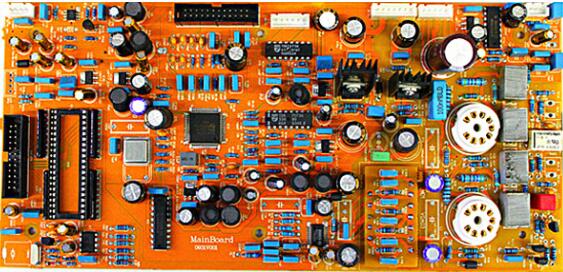Bypass and decoupling improve the quality of the power distribution network by preventing the transfer of useful energy from one circuit to another and changing the transmission path of noise energy. It has three basic concepts: power supply, ground plane, component and power connection of inner layer.
Decoupling is the transfer of rf energy from the power supply side of the high-frequency PCB device to the power distribution network when the device is switched on and off at high speed. Decoupling capacitors also provide a local DC source for devices and components, which is useful for reducing surge spikes in current propagation across the plate.

In digital circuits and IC controller circuits, it is necessary to perform power decoupling. A transient spike occurs in the power distribution network without decoupling capacitors when the component switches consume DC energy. This is because there is a certain inductance in the power supply network, and the decoupling capacitor can provide a local power supply with no inductance or very small inductance. By keeping the voltage at a constant reference point, the decoupling capacitor prevents faulty logic conversion and reduces noise generation because it provides a loop area for high-speed switching current instead of a large backflow area between the element and the remote power supply.
The decoupling capacitor in the PCB can greatly reduce the current loop area. Another function of the decoupling capacitor is to provide a local energy storage source, which can reduce the radiation path of the power supply. The generation of RF energy in the circuit is proportional to I·A· F, where I is the backflow current; A is the area of the loop; F is the frequency of the current. Because the current and frequency are determined during device selection, it is important to reduce the loop area of the current in order to reduce the radiation. In circuits with decoupling capacitors, current flows in small RF current loops, thus reducing RF energy. Small loop areas can be obtained by placing decoupling capacitors.
As shown in the figure above, δ U is the noise produced by L·di/dt on the ground wire, which flows in the decoupling capacitance. This DELTA U drives the common mode voltage from the ground structure on the board and the distribution system to the entire circuit board. Therefore, the decrease of δ U is related to the ground impedance, as well as the usage and location of the decoupling capacitor.
Decoupling is also a way to overcome physical and temporal constraints by providing a low-impedance power supply between the signal line and the power line and between the plane. Before the frequency rises to the self-resonant point, as the frequency increases, the impedance of the decoupling capacitor will become lower and lower, so that the high frequency noise will be effectively discharged from the signal line, and the remaining low frequency radiation energy will have no impact. According to the principle of decoupling capacitor, if it is more difficult to absorb energy from the power line, most of the energy will be obtained from the decoupling capacitor, giving full play to the role of the decoupling capacitor, and at the same time, the di/ DT noise on the power line will be smaller. In this way, the impedance on the power line can be artificially increased.
It is a common method to connect ferrite beads in series on the IC power supply line. Because ferrite beads show a large impedance to high-frequency current, the effect of decoupling capacitance of the power supply is enhanced.
Bypassing is the drain of unnecessary common-mode RF energy from components or cables. Its essence is to create an ALTERNATING current bypass to drain unwanted energy away from vulnerable areas. In addition, it provides filtering capabilities. Its ability to filter is obviously limited by its own bandwidth. Bypasses are sometimes referred to collectively as filter designs. Bypass or filtering is usually applied between power sources and ground, between signals and ground, or between different ground. It is different from decoupling. But the use of capacitors is the same, so the characteristics usually described about capacitors apply to decoupling and bypass.
Energy storage is used to maintain a constant DC voltage and current supplied to the device when the signal pins used are switched on and off simultaneously under capacity load. It also prevents power drops due to the device's DI/DT surge. If decoupling is a high frequency category, energy storage can be understood as a low frequency category.